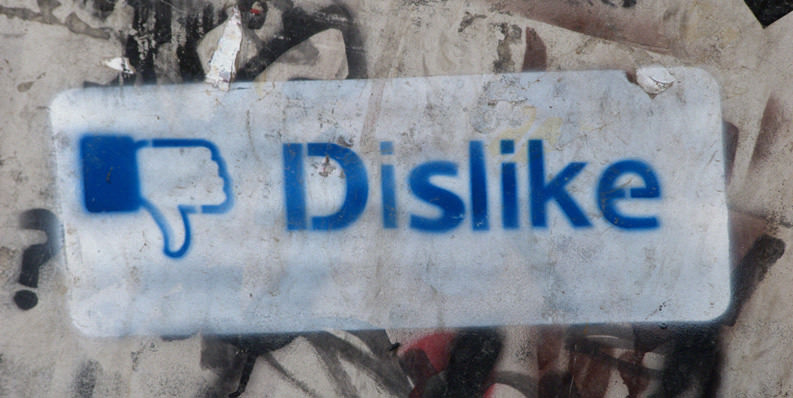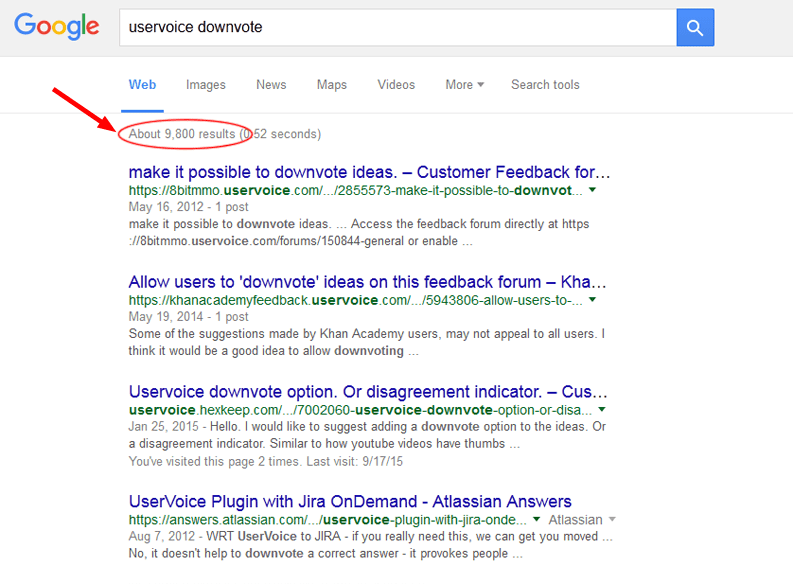-
Facebook Doesn’t Need a Dislike Button, but Your Business Does
Fri, 25 Sep 2015, in Communities, Helprace
Facebook has been making rounds in the news due to its decision to unveil a “dislike” button.
In his Q-and-A, Zuckerberg was clear as to why the dislike feature was being put off for so long. He stressed that it’s something that would be bad for Facebook and society at large. He literally said that disliking content is “not something that is good for the world”. In other words, Facebook wants to make it clear we’re all better off if we avoid expressing negative sentiments.
 photo credit Ze’ev Barkan
photo credit Ze’ev BarkanI guess if Zuckerburg made cars, the horn would be replaced by a like button, and we’d all be stuck in traffic waiting for the moment we could "like" the Instagram of the bodies surrounding the 8-car pileup that caused it.
But on a serious note, I can’t help but look at his naive view with a touch of skepticism. I think there are deeper (read: financial) interests at stake here than just being “good for the world”.
What Zuckerberg really meant to say is anything that inhibits users from sharing, commenting and clicking on posts to the max is bad for Facebook. In other words, it would harm engagement – and for a brand that encourages shareable and likable content, a dislike button goes against that.
Seeing dislikes on someone’s post may cause you to hesitate voicing your support. Seeing dislikes on your own posts could make you think twice about what you’re sharing. Either way, it’s unwanted friction for Facebook and their advertising partners.
Benefits of negative word-of-mouth
Bob Baldwin, a Facebook product engineer hosted an ask-me-anything session where he rationalized Facebook’s decision in keeping dislikes out:
Actions on Facebook tend to focus on positive social interactions. Like is the lightest-weight way to express positive sentiment. I don’t think adding a light-weight way to express negative sentiment would be that valuable.Bob BaldwinHowever, LoyaltyOne research proves that the opposite is true and negative word-of-mouth kick starts positive engagement. The study showed that posters who resurfaced after posting their negative sentiments exhibited 36% increase in transactions.
In public conversations such as blog comments, social media shares or community discussions positive outcomes out of negative situations are most memorable to customers. Such conversations are stories with context, meaning and sentiment which drives customer understanding of the brand. Therefore, negativity can be used to drastically increase engagement.
For example, a top Canadian loyalty program Air Miles came under fire for altering some of their program rules and items redeemable for points. They expected some negative backlash, but didn’t anticipate the value of listening to negative feedback:
- Users that spread negative word-of-mouth or react negatively are usually your best customers. If customers are passionate enough to voice their negative feelings toward your brand, they can be leveraged in your recovery efforts.
- Any action with a reactionary force merely demonstrates that engagement is present. Customers were angry precisely due to their emotional connection with the product which gave Air Miles a better understanding of customer expectations.
Air Miles realized that negative voices are a naturally occurring representation of brand sentiment and should be listened to, not cast aside. By placing restrictions or obstacles to these intense displays of brand passion, companies are closing their eyes to meaningful discussions, suggestions and bonding opportunities with their customers.
Patrick Sojka, founder of Rewards Canada website says many rewards programs have a different way of listing their fees and sometimes have trouble communicating them across. Negative word-of-mouth can help product managers identify where they made a wrong turn.
What’s better, upvoting or downvoting?
Let’s compare Hacker News and Reddit, two sites built around vibrant link-sharing and discussion building communities. They may seem similar in purpose, but they have fundamentally different ways of treating user votes.
On Hacker News, a post effectively starts at zero (though there is always a possibility of upvoting your own post). This system comes at a cost: it’s difficult to determine its quality and popularity of the topic. Is it bad? Uninteresting? Controversial? It’s quite difficult to pinpoint what that 0 actually means.

One main benefit of downvotes and negative word of mouth is that it gives you a better understanding of how to respond to users. Therefore, removing the ability to downvote also removes a critical feedback loop for your audience.
Take for example the positive scale on Hacker News versus the positive and negative scale on a site like Reddit. Once you factor in the negatives, not only is your range doubled but now you have the ability to discern a mediocre post from a bad or senseless post.

Should users be able to upvote, downvote or perhaps not vote at all? Since this question is a matter of debate, we believe the best thing to do is put voting settings into the hands of our customers. It should be up to brands to decide what type of voting weights to assign to their own discussions.

Dangers of ignoring negative sentiment
Of course, there are many community and social media platforms that refuse to acknowledge opposing opinions.
One example is UserVoice, an idea management platform is one of the few that don’t allow downvoting on suggested ideas. Their reasons for rejecting this feature stems from the fact that:
- downvoting is negative in nature, even though negative votes help businesses improve
- it complicates the issue when in actuality it accurately captures the customer’s voice
- they prefer dissent remain in the comments section, which adds friction to the user experience
Wouldn’t it be better to give this responsibility to the customer? Many (including ourselves) certainly think so:

At Helprace, we value all opinions. We also found that downvotes give us a critical ability to distinguish between various stages of usefulness of customer feedback. Do others see this content as good, bad, unnecessary or harmful? These are important questions that any customer-facing company should want answers to.
As for Facebook’s reluctance to “dislike”?
Many see Facebook as a glorified PR app aimed at whoever is using (paying) for that benefit: an individual, a company, a product.
No good PR person invites people to publicly say how bad their product is. So Facebook takes the easy way out, irregardless of how much marketing and competitive information is lost in the process.
Tags: dislike button, facebook, helprace community, helprace votes, helprace voting

